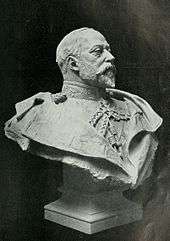23rd Sikh Pioneers
| 23rd Sikh Pioneers | |
|---|---|
|
Jemadar 23rd Sikh pioneers standing 4th from right | |
| Active | 1857-1922 |
| Country |
|
| Branch | Army |
| Type | Infantry |
| Size | Three battalions |
| Part of |
Bengal Army (to 1895) Bengal Command |
| Nickname(s) | Mazhabi Pioneers |
| Uniform | Drab; faced chocolate |
| Engagements |
Siege of Delhi 1857 Siege of Lucknow 1857 Capture of Lucknow 1857 Taku Forts 1858 Taku Forts 1860 Battle of Palikao 1860 Pekin 1860 1868 Abyssinia 1878 - 80 Afghanistan 1878 Peiwar Kotal 1879 Charasiah 1897 Kabul 1897 Chitral 1903 Tibet 1914-1918 First World War 1919 Afghanistan 1920 Iraq |
| Commanders | |
| Colonel-in-Chief | King Edward VII (1904) |
The 23rd Sikh Pioneers were a regiment of the British Indian Army. They could trace their origins to 1857, when they were known as the 15th (Pioneer) Regiment of Punjab Infantry. The regiment recruited exclusively from the Mazhabi Sikh community of Punjab province. Despite being "pioneers" by name, the regiment functioned as a Sikh infantry regiment specially trained as assault pioneers.[1]
Brief History
They took part in the Battle of Taku Forts (1858), the Battle of Taku Forts (1860) and the Battle of Palikao in the Second Opium War.This was followed by the 1868 Expedition to Abyssinia a punitive expedition carried out by the armed forces of the British Empire against the Ethiopian Empire and Emperor Tewodros II of Ethiopia.[2] They next took part in the Battle of Peiwar Kotal,the Battle of Charasiab in the Second Afghan War in 1878.In 1903, they took part in the British expedition to Tibet an invasion of Tibet by British Indian forces, seeking to prevent the Russian Empire from interfering in Tibetan affairs.
After World War I, the Indian government reformed the army moving from single battalion regiments to multi battalion regiments.[3] In 1922, the 23rd Sikh Pioneers now became the 1st Battalion, 3rd Sikh Pioneers, they were renamed again in 1929, as the Corps of Sikh Pioneers, which was disbanded in 1933. During the Second World War the regiment was reformed and named the Sikh Light Infantry. This regiment was allocated to the new Indian Army after independence.
Colonels of the regiment

- His Majesty King Edward VII - Colonel-in-Chief 1904
Previous names
- 23rd Bengal Native Infantry - 1861
- 23rd (Punjab) Bengal Native Infantry (Pioneers) - 1864
- 23rd (Punjab) Bengal Infantry (Pioneers) - 1885
- 23rd Punjab Pioneers - 1901
References
- Barthorp, Michael; Burn, Jeffrey (1979). Indian infantry regiments 1860-1914. Osprey Publishing. ISBN 0-85045-307-0.
- Sumner, Ian (2001). The Indian Army 1914-1947. Osprey Publishing. ISBN 1-84176-196-6.
